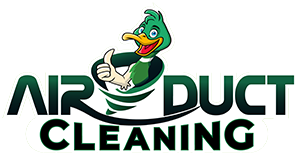Indoor air quality is a critical factor in maintaining a healthy environment, especially in sensitive areas like hospitals. At Air Duct Cleaning, we understand the importance of clean air and are committed to helping you achieve it. Our focus is on improving indoor air quality in hospitals, a topic that deserves attention and action. We offer specialized services to clean your air ducts, thereby enhancing the air quality in your healthcare facility. With our expertise, we aim to reduce airborne contaminants, control allergens, and ensure a safer, healthier environment for patients and staff alike. Our comprehensive approach to air duct cleaning not only improves air quality but also contributes to the overall wellness of individuals within the hospital premises. So, let’s delve into the ways to improve indoor air quality and understand the role of professional air duct cleaning in this process.
Understanding the Importance of Indoor Air Quality in Hospitals
Indoor air quality in hospitals is a critical aspect of healthcare that often goes unnoticed. It plays a significant role in preventing the spread of airborne diseases, reducing the risk of hospital-acquired infections, and promoting overall patient health and recovery.
The World Health Organization (WHO) states that poor indoor air quality can lead to a variety of health issues, including respiratory problems, allergic reactions, and even certain types of cancer. In a hospital setting, these risks are amplified due to the vulnerability of patients. Therefore, understanding and improving indoor air quality is a crucial part of hospital management and patient care.
One of the primary concerns related to indoor air quality in hospitals is the presence of airborne pathogens. These can include bacteria, viruses, and fungi, which can easily spread through the air and cause infections. According to a study published in the Journal of Hospital Infection, airborne transmission is responsible for a significant proportion of hospital-acquired infections.
“Airborne transmission is responsible for a significant proportion of hospital-acquired infections.”
To mitigate this risk, hospitals need to implement effective air quality control measures. This can include regular air duct cleaning, use of high-efficiency particulate air (HEPA) filters, and proper ventilation. Regular air duct cleaning is particularly important as it helps to remove dust, debris, and microbial contaminants from the air circulation system.
Another factor that can affect indoor air quality in hospitals is the use of chemicals and volatile organic compounds (VOCs). These can be released from cleaning products, disinfectants, and medical equipment, and can cause adverse health effects. Therefore, hospitals should opt for products with low VOC content and ensure adequate ventilation to disperse these chemicals.
- Regular air duct cleaning
- Use of HEPA filters
- Proper ventilation
- Use of low VOC products
In addition to these measures, hospitals can also monitor indoor air quality using advanced sensors and devices. These can provide real-time data on various air quality parameters, enabling hospitals to take immediate action when necessary.
Moreover, educating staff about the importance of indoor air quality and how to maintain it can also help to improve the indoor environment in hospitals. This can be achieved through regular training sessions and workshops.
In conclusion, indoor air quality is a vital aspect of hospital care that needs to be prioritized. By understanding its importance and implementing effective measures, hospitals can provide a safer and healthier environment for patients and staff alike. For more information on how to improve indoor air quality in hospitals, visit our blog and learn about the best air duct cleaning methods.
References:
World Health Organization. (n.d.). Indoor air quality. Retrieved from https://www.who.int/teams/environment-climate-change-and-health/air-quality-and-health/indoor-air-quality
Journal of Hospital Infection. (n.d.). Airborne transmission of infection in hospitals. Retrieved from https://www.journalofhospitalinfection.com/article/S0195-6701(13)60037-3/fulltext
Identifying Common Pollutants Affecting Hospital Indoor Air Quality
Hospital environments require stringent measures to maintain optimal indoor air quality (IAQ). The presence of pollutants can significantly impact the health of patients, staff, and visitors. Therefore, it is crucial to identify and understand the common pollutants that affect IAQ in hospitals.
One of the most prevalent pollutants in hospital environments is biological contaminants. These include bacteria, viruses, fungi, and dust mites, which can cause a range of health issues, from allergies to severe respiratory infections. These contaminants often originate from people, plants, plumbing systems, or even HVAC systems. Regular and thorough cleaning of air ducts can significantly reduce the presence of these biological pollutants. Learn more about the process and importance of air duct cleaning on our website.
Chemical pollutants are another common concern in hospitals. These can come from a variety of sources, including cleaning products, disinfectants, pesticides, and even medical equipment. Volatile organic compounds (VOCs) are a type of chemical pollutant that can cause headaches, dizziness, and irritation of the eyes, nose, and throat. In some cases, they can even lead to serious health problems like liver or kidney damage. To mitigate the risk of chemical pollutants, it’s essential to use products that are low in VOCs and to ensure proper ventilation.
Particulate matter, including dust, pollen, and smoke, can also degrade IAQ. These particles can be inhaled into the lungs, causing respiratory problems, especially in individuals with pre-existing conditions. Regular maintenance of HVAC systems, including air duct cleaning, can help reduce the levels of particulate matter in the air.
Radiological pollutants, although less common, can also be present in hospital environments. These pollutants can come from medical equipment that uses radiation, like X-ray machines. Proper handling and disposal of radiological materials are crucial to prevent contamination.
Lastly, physical factors like temperature, humidity, and noise can also impact IAQ. High humidity levels can promote the growth of mold and bacteria, while low humidity can cause dryness and discomfort. Noise pollution, although not directly related to air quality, can cause stress and impact overall wellbeing.
In conclusion, maintaining optimal IAQ in hospitals involves identifying and managing a variety of pollutants. Regular cleaning and maintenance of HVAC systems, proper handling and disposal of chemical and radiological materials, and maintaining appropriate temperature and humidity levels are all crucial steps. For more information on how to improve IAQ in hospitals, visit our blog.
The Role of Ventilation Systems in Enhancing Indoor Air Quality
In the context of improving indoor air quality in hospitals, ventilation systems play a pivotal role. These systems are designed to control the flow of air, thus reducing the concentration of airborne contaminants and ensuring a healthy environment for patients, staff, and visitors.
Ventilation systems work by replacing stale, contaminated indoor air with fresh outdoor air. This process dilutes the concentration of airborne pollutants, such as dust, bacteria, viruses, and chemical fumes, which are common in hospital settings. By doing so, ventilation systems can significantly improve indoor air quality, reducing the risk of airborne diseases and allergies.
However, the effectiveness of a ventilation system largely depends on its maintenance. Over time, dust and other pollutants can accumulate in the air ducts, reducing the system’s efficiency and potentially releasing contaminants back into the indoor environment. Therefore, regular air duct cleaning is crucial to maintain the performance of the ventilation system and ensure optimal indoor air quality.
In addition to regular cleaning, the design and installation of the ventilation system also have a significant impact on its performance. For instance, the system should be designed to provide adequate air exchange rates, considering the size and occupancy of the space. Moreover, the system should be installed in a way that facilitates easy access for cleaning and maintenance.
While ventilation systems are a key component in maintaining indoor air quality, they should be complemented with other strategies. For instance, the use of high-efficiency particulate air (HEPA) filters can further reduce the concentration of airborne pollutants. Moreover, regular cleaning and disinfection of surfaces can help control the source of contaminants.
In conclusion, ventilation systems are an essential tool in enhancing indoor air quality in hospitals. However, their effectiveness largely depends on regular maintenance and proper design and installation. Therefore, it is recommended to consult with a professional air duct cleaning company to ensure the optimal performance of the ventilation system.
For more information on how to improve indoor air quality in hospitals, visit our blog. Here, you can find a wealth of resources on air duct cleaning, including how often it should be done, how much it costs, and how to tell if your air ducts need cleaning.
Implementing Regular Maintenance and Cleaning Procedures
Improving indoor air quality in hospitals is a critical aspect of ensuring a safe and healthy environment for patients, staff, and visitors. One of the most effective ways to achieve this is through the implementation of regular maintenance and cleaning procedures. This involves a comprehensive approach that includes the cleaning of air ducts, regular maintenance of HVAC systems, and the use of high-quality air purifiers.
Air ducts are a crucial component of the hospital’s HVAC system. They are responsible for circulating air throughout the building, and if not properly maintained, they can become a breeding ground for dust, mold, and other harmful contaminants. Therefore, regular air duct cleaning is essential. This process involves the use of specialized tools and equipment to remove dust and other debris from the ducts, ensuring that the air circulating in the hospital is clean and free from harmful particles.
In addition to cleaning the air ducts, it’s also important to maintain the HVAC system regularly. This includes changing the filters regularly, inspecting the system for any signs of damage or wear and tear, and scheduling regular maintenance checks with a professional HVAC technician. Regular maintenance of the HVAC system not only ensures that it operates efficiently but also helps to improve the overall air quality in the hospital.
Another important aspect of maintaining indoor air quality in hospitals is the use of air purifiers. These devices work by filtering the air and removing harmful particles such as dust, pollen, and bacteria. However, not all air purifiers are created equal. It’s important to choose a high-quality air purifier that is capable of removing a wide range of contaminants from the air. This includes HEPA filters, which are capable of capturing 99.97% of particles that are 0.3 microns in diameter or larger.
Furthermore, it’s also important to consider the placement of the air purifiers. They should be strategically placed in areas where there is a high risk of air contamination, such as patient rooms, waiting areas, and near entrances and exits.
Lastly, it’s important to educate staff and visitors about the importance of maintaining good indoor air quality. This includes implementing policies such as a no-smoking policy, encouraging the use of hand sanitizers, and providing training on how to properly use and maintain the HVAC system and air purifiers.
In conclusion, improving indoor air quality in hospitals involves a comprehensive approach that includes regular air duct cleaning, maintenance of the HVAC system, the use of high-quality air purifiers, and education of staff and visitors. By implementing these procedures, hospitals can provide a safer and healthier environment for everyone.
The Use of Air Purifiers and Filters in Hospitals
Improving indoor air quality in hospitals is a critical aspect of ensuring a safe and healthy environment for patients, staff, and visitors. One of the most effective ways to achieve this is through the use of air purifiers and filters. These devices work by removing harmful particles, allergens, and pollutants from the air, thereby reducing the risk of airborne diseases and improving overall air quality.
Air purifiers are devices that cleanse the air in a room to improve indoor air quality. These devices are commonly marketed as being beneficial to allergy sufferers and asthmatics, and at reducing or eliminating second-hand tobacco smoke. In a hospital setting, air purifiers can play a crucial role in preventing the spread of airborne diseases. They do this by trapping airborne particles such as dust, pollen, and bacteria, and removing them from the air. This can be particularly beneficial in areas of the hospital where patients with respiratory conditions are treated.
Filters, on the other hand, are used in HVAC (Heating, Ventilation, and Air Conditioning) systems to remove particles from the air as it is circulated. In hospitals, high-efficiency particulate air (HEPA) filters are often used. These filters are designed to capture 99.97% of particles that are 0.3 microns in diameter, which includes most bacteria and virus particles.
The use of air purifiers and filters in hospitals is not just about improving air quality. It’s also about reducing the risk of hospital-acquired infections. These are infections that patients acquire while receiving treatment for other conditions. By improving air quality, hospitals can reduce the risk of these infections, leading to better patient outcomes.
Regular maintenance of these devices is also crucial. Filters need to be changed regularly to ensure they continue to effectively remove particles from the air. Similarly, air purifiers need to be cleaned and serviced to ensure they are working correctly. This is where professional air duct cleaning services, such as those offered by Air Duct Cleaning, can be invaluable. These professionals have the knowledge and equipment necessary to ensure these devices are properly maintained.
In addition, it’s important to note that while air purifiers and filters can significantly improve air quality, they are not a substitute for good ventilation. Hospitals need to ensure they have effective ventilation systems in place to bring in fresh air and remove stale air. This, combined with the use of air purifiers and filters, can help to significantly improve indoor air quality.
In conclusion, the use of air purifiers and filters in hospitals is a key component of improving indoor air quality. These devices, combined with effective ventilation and regular maintenance, can help to create a safer and healthier environment for everyone in the hospital. For more information on how to improve indoor air quality, visit Air Duct Cleaning.
Incorporating Plants for Natural Air Purification
Improving indoor air quality in hospitals is a critical aspect of maintaining a healthy environment for patients, staff, and visitors. One innovative and natural method to enhance air quality is through the strategic use of plants. Plants are nature’s air purifiers, absorbing harmful toxins and releasing fresh oxygen into the environment.
The science behind this is fascinating. Plants absorb gases through their leaves and roots. The microorganisms that live in the soil of potted plants also play a significant role in neutralizing volatile organic compounds (VOCs). These compounds are often found in hospital environments, emitted by medical equipment, cleaning products, and building materials.
Certain plants are particularly effective at purifying the air. For instance, the Spider Plant is known for its ability to reduce levels of formaldehyde, a common VOC. Similarly, the Peace Lily can help to reduce levels of benzene and trichloroethylene, two other common VOCs.
However, it’s not just about selecting the right plants. Placement is also crucial. Plants should be strategically placed around the hospital, particularly in areas where air quality may be compromised. This includes areas near entrances and exits, where outdoor pollutants may enter, and areas where chemicals or medical equipment are frequently used.
In addition to the natural air purification benefits, incorporating plants into a hospital setting can also have a positive impact on the wellbeing of patients and staff. Studies have shown that the presence of plants can reduce stress, improve mood, and even boost productivity.
While plants can significantly contribute to improving indoor air quality, it’s important to remember that they are just one part of a comprehensive air quality management strategy. Regular maintenance and cleaning of air ducts is also crucial. For more information on this, you can refer to our detailed guide on how air duct cleaning works.
It’s also worth noting that not all air ducts need to be cleaned regularly. Factors such as the age of the building, the type of heating and cooling system, and the local climate can all impact how often air duct cleaning should be carried out. Our article on how often should air ducts be cleaned provides more information on this.
In conclusion, the strategic use of plants can be a powerful tool in improving indoor air quality in hospitals. However, it should be used in conjunction with other methods, such as regular air duct cleaning, to ensure the best possible air quality for patients, staff, and visitors. For more tips and advice on improving indoor air quality, check out our blog.
Monitoring and Improving Indoor Air Quality: Future Trends and Technologies
Indoor air quality in hospitals is a critical aspect of patient care, staff well-being, and overall healthcare delivery. With advancements in technology, the future holds promising trends for monitoring and improving this vital aspect of hospital environments.
One of the emerging trends is the use of smart sensors for real-time monitoring of indoor air quality. These sensors can detect and measure various pollutants, including particulate matter, volatile organic compounds, carbon dioxide, and other harmful substances. The data collected can be analyzed to identify patterns, predict potential issues, and implement corrective measures. This proactive approach can significantly enhance the indoor air quality, contributing to a healthier environment for patients and staff.
Another promising technology is the use of advanced air purification systems. These systems, unlike traditional ones, can eliminate a broader range of pollutants, including bacteria, viruses, and allergens. They use technologies such as HEPA filters, ultraviolet light, and activated carbon filters to purify the air. Some advanced systems also incorporate ionization and photocatalytic oxidation, which can neutralize even the smallest airborne particles.
In addition to these technologies, the use of building information modeling (BIM) in designing and managing hospital buildings can also contribute to improved indoor air quality. BIM can help in optimizing the ventilation system design, ensuring adequate air exchange, and minimizing the risk of airborne infections.
While these technologies offer significant benefits, their effectiveness depends on regular maintenance and cleaning of the air ducts. Over time, dust, mold, and other pollutants can accumulate in the air ducts, affecting the indoor air quality. Regular air duct cleaning can help in maintaining the efficiency of the air purification systems and ensuring optimal indoor air quality.
Moreover, it’s essential to understand how often should air ducts be cleaned to maintain a healthy indoor environment. The frequency of cleaning depends on various factors, including the hospital’s location, the type of air purification system in place, and the specific needs of the patients and staff.
The future of indoor air quality management in hospitals also involves the integration of these technologies with artificial intelligence and machine learning. These technologies can help in predictive analysis, enabling timely interventions and optimizing the use of resources.
In conclusion, the future trends and technologies for monitoring and improving indoor air quality in hospitals involve a combination of advanced sensors, air purification systems, and smart building design. Regular maintenance, including air duct cleaning, is also crucial to ensure the effectiveness of these technologies. With these advancements, hospitals can provide a healthier and safer environment for patients and staff, contributing to better healthcare outcomes.
In conclusion, improving indoor air quality in hospitals is not just a necessity, but a responsibility. It is a crucial aspect that contributes to the overall health and recovery of patients, as well as the wellbeing of the healthcare staff. Implementing strategies such as regular maintenance of HVAC systems, use of air purifiers, proper ventilation, and control of indoor pollutants can significantly enhance the air quality. Furthermore, the adoption of green building concepts and materials can also contribute to a healthier and safer hospital environment. As we move forward, it is essential that healthcare facilities continue to prioritize and invest in measures that ensure clean, fresh, and healthy air for all.





